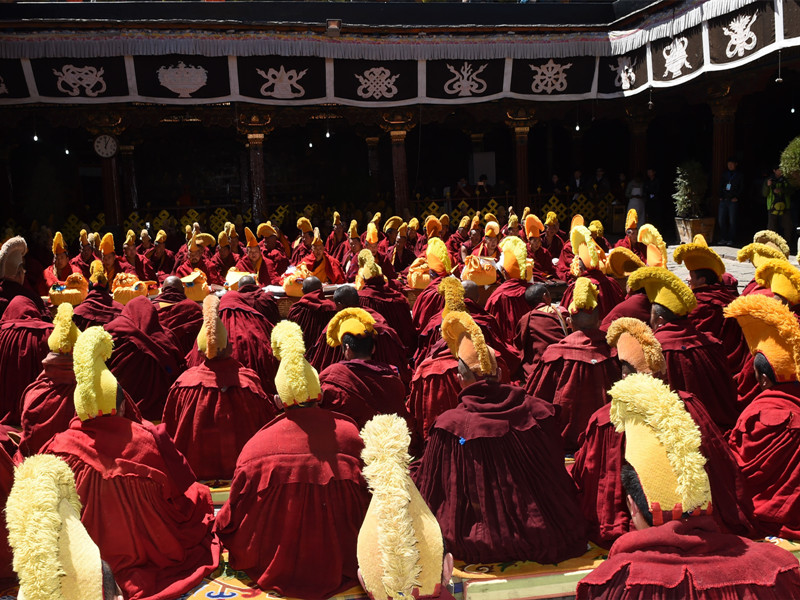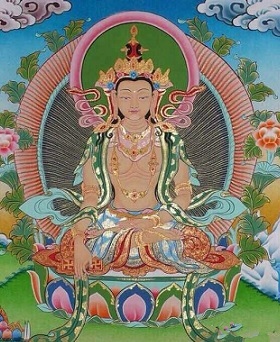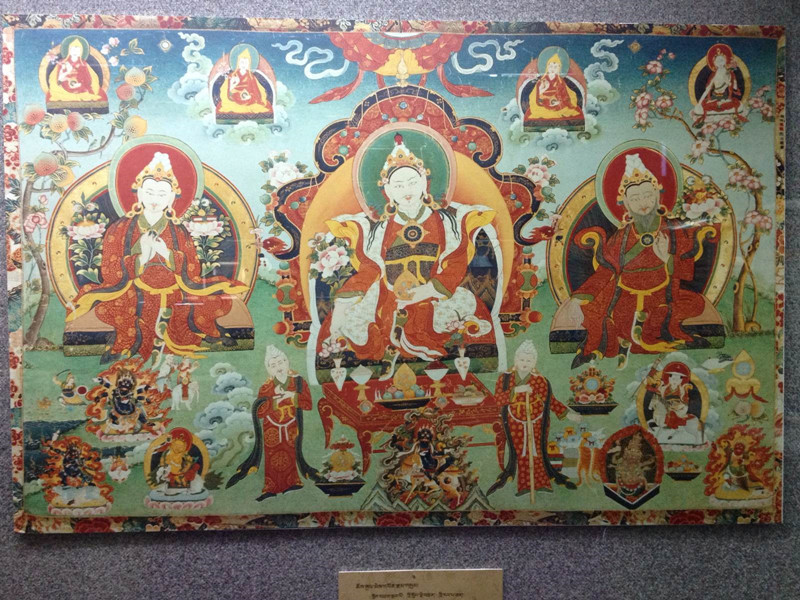 photos: GreatTibetTour.com
photos: GreatTibetTour.com
With the increasing development of Tibet tourism, more and more people choose this exotic land - a once mysterious "Shangri-La" existing in isolation for nearly 14 centuries - as their dream destination. People who've visited the country or have some knowledge of it know that it is a religious society where Buddhism had been integrated with the life of many Tibetans, affecting local behavior including not just praying but other life activities such as cooking and building houses.
Buddhism originated, of course, in India, but evolved differently after spreading to Tibet. So in order to introduce interested readers to a central part of Tibetan culture, my company Great Tibet Tour and I would like to provide a quick introduction to Tibetan Buddhism.
 Beginnings
Beginnings
Not so many people know this, but prior to Buddhism Tibetans believed fervently in an indigenous folk religion called Bon, based on animism, shamanism, and ancestor worship. But in the 7th century, the second emperor of Tibet, Songtsen Gampo, sent emissaries to bring Buddhist scriptures from ancient India and northern Tang Dynasty China and promoted it widely in Tibet. Because the underlying doctrines of Buddhism and Bon are similar, Buddhism caught on quickly and even absorbed some of the teachings of Bon.
Growth and Development
Subsequent emperors continued this promotion, with two notable milestones. Emperor Trisong Detsen (755-797) established Buddhism as the official state religion and invited eminent Indian monks Shantarakshita and Padma Sambhava to teach it in Tibet; they were also responsible for the building of the first Buddhist monastery, Samye in southeastern Tibet. He also arranged for monks to tonsure young Tibetan nobles, translate scriptures brought from India, and participate in political affairs. Another successor, Tritsu Detsen (815-838) - best known as Rapalcan - is also considered the third of Tibet's three so-called "dharma kings" who brought Buddhism to Tibet; he was a generous supporter of the religion and invited many craftsmen, scholars and translators from neighboring countries. A lot of monasteries and temples were built during this period, such as Jokhang Temple in capital Lhasa and Drepung Monastery just west of the capital, and people of all walks of life were proud of either being monks/nuns or at least practicing Buddhism at home.
His successor Langdarma (838-842), however, started to suppress Buddhism as he thought the power of monks and lamas were out of control and also favored the indigenous Bon traditions (which still persevere in Tibet today, by the way). He destroyed or damaged temples and monasteries and forced monks or lamas to resume secular life. But his was a short reign - cut short by (ironically) assassination at the hands of a Buddhist hermit - and the realm fragmented under his sons. However, the influence of Buddhism continued to grow and evolve, and in the 15th century the first Dalai Lamas emerged to start shaping the theocracy that ruled the country until its annexation by China in 1959. This era also saw the establishment of the fourth and final school of Tibetan Buddhism, Gelugpa.

Here is a summary of those four denominations, from largest to smallest:
Gelugpa (Yellow-Hat Sect)
Also known as the Yellow-Hats sect as its followers wear dark red frocks and yellow hats (see picture at top), it's the youngest school, it’s also the largest and most important. Its founder, monk Je Tsongkhapa, demanded strict monastic discipline; for example, lamas may not eat meat nor drink alcohol, and must remain celibate. Ganden, Drepung, Sera, and Tashilunpo are the top four Gelugpa monasteries.
Nyingmapa (Red-Hat)
The oldest and now second largest denomination was founded in the 8th century by monk Padma Sambhava (who was honored as “the second Buddha” by his followers) and altered a little by teacher and abbot Longchenpa in the 14th.century. Nyingma monks are not required to be celibate.
Kagyupa (Red-Hat)
The third largest sect traces its lineage back to the Tantric teachings of several 11th-century Indian monks and yogis. Its followers practice to achieve inner peace (leading to Kagyu being known as “the Tibetan Zen”) as well as the "six perfections" of generosity, moral ethics, patience, perseverance, concentration, and awareness.
Sakyapa (Red-Hat)
The Sakya school is named for the eponymous monastery, established in 1073 in the south of Tibet (the word means “pale earth,” for the gray-and-white landscape surrounding the monastery) and also centers on tantric doctrines and practices and the importance of parting from the "four attachments" of earthly existence.
Comments